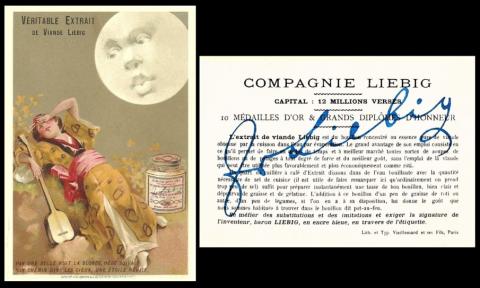
Clue two was another sky signal, but this one tells you that if you want to see the Perseids, or any astronomical event, you must look away from the moon. In that way, you will allow your eyes to become accustomed to the darkness of the night, which can take about half an hour, and you will be able to pick up fainter trails as well as bright ones.
This set was issued during the revival of what was known as "Japonisme", a sudden fancy and fascination with Japan. It had started by way of business, when, in the late 1860s, the trade borders and export market had opened with Japan, but the early visitors also brought back souvenirs, like clothing, pictures, furniture, and suddenly being Japanese became a trend, all over the world. And popular culture reflected that enormously, with Gilbert and Sullivan`s "The Mikado" being written in 1885. Whilst the first set of Liebig cards to feature the Orient was S.35, known as "Children in Oriental Costumes", issued in 1873
The craze was affected, rather, by war, specifically the First Sino-Japanese War of 1894, which happened just at the time this set was issued, but it did resume, towards the end of the nineteeth century - and with gusto.
Each of these cards shows a girl in Japanese costume, though not necessarily a Japanese girl, and she is portrayed with an instrument which is often wrongly described as a guitar, but it actually a shamisen. At the top part of the picture is a moon with a face, and an expression. And at the bottom, below the picture, is a two line verse. Some time I will get my magnifying glass and tap them all in.
